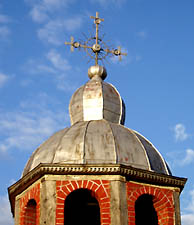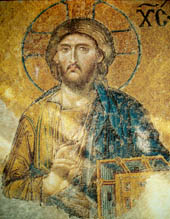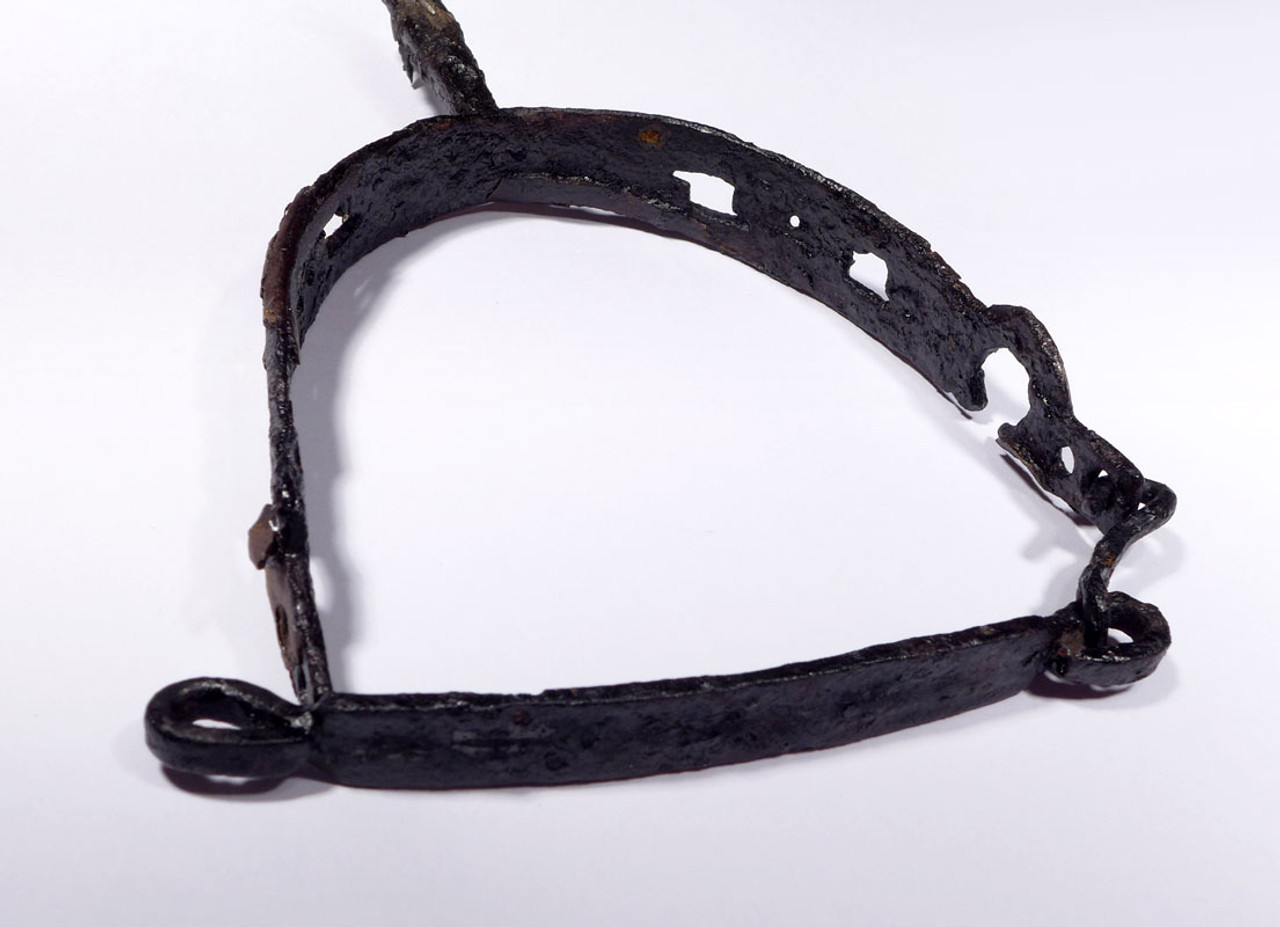Product Description
ID
|
Spur
|
||
FOUND
|
Balkans - Eastern Europe
|
||
AGE
|
4TH - 14TH CENT A.D.
|
||
SIZE
|
7" long x 3.6" wide
|
||
CONDITION
|
NO REPAIR OR RESTORATION.
|
||
NOTE
|
EXTREMELY RARE EXAMPLE
|
||
INCLUDES DISPLAY BOX |
|||
This EXTREMELY RARE gilded bronze over iron horse spur is attributed to the Christian Roman Byzantine Period of the Eastern Empire. It is exceptionally rare not only for the condition it is in being complete and with intact original gilded bronze sheet decorations, but for WHAT it is. As a rare prize example of the splendor of Byzantium, a spur would NOT have been commonly encountered in ancient times as it strictly reserved for a mounted warrior of either officer rank or nobility. We have handled thousands of Roman Byzantine specimens of various types but never have we seen such a RARE example as this. It was cleaned and conserved in our lab and the iron has been treated and stabilized. Seldom does an ancient object in iron of this delicate nature, survive the ages and more so, with the rare presence of decorative sheet bronze gilded in a layer of gold. It is certainly a piece that was reserved for only the highest authority in the Empire!
The cavalry was the most powerful and important weapon of the Byzantine Roman military as opposed to the ground forces of the earlier Roman Empire. Protection and support of the cavalry was vital to victory. Loss of the cavalry was a sure defeat as the ground troops in the Byzantine Roman army by this era were ill-equipped and inferior to the invader armies. At this time in Roman history, the cavalry was the primary strength of the Roman military!
This piece was reportedly found on an ancient battlefield and was likely worn by a former soldier of the Roman Byzantine army. It was found in the region of the Empire's northern border along the Danube River in the present day East Balkans. This region was the northern-most boundary of the Roman Empire for most of its duration and evolution into Byzantium right up until 1336 AD when the area fell under Ottoman rule. In the Balkans, Roman camps and fortresses along the Danube were constantly being challenged by opposing tribes and armies. The river served as a natural barrier against attacks from the north. Collected from a region that was once occupied by the Byzantine Roman military as they fought against the challengers of the Christian Roman Empire, these weapons were utilized by Roman soldiers in one of the many violent and frequent battles that took place in defense of Byzantium.
This rare artifact of the cavalry of the Christian Roman Empire is no less than a true museum piece. INTACT AND COMPLETE WITH NO REPAIR OR RESTORATION.
 Perhaps no other epoch in history is so unique, extensive and yet, as much forgotten as that of the Byzantine Roman Empire. From the founding of its new capitol in Constantinople, 330 AD to its final fall to the Ottoman invaders in 1453, over eleven hundred years of history has virtually been lost in most minds of the Western world. Ironically, it is this exact history that has extensively shaped the Western cultures today, especially those of the Christian faith.
Perhaps no other epoch in history is so unique, extensive and yet, as much forgotten as that of the Byzantine Roman Empire. From the founding of its new capitol in Constantinople, 330 AD to its final fall to the Ottoman invaders in 1453, over eleven hundred years of history has virtually been lost in most minds of the Western world. Ironically, it is this exact history that has extensively shaped the Western cultures today, especially those of the Christian faith.
No event in Western history was probably more pivotal than that of the Christian conversion of the Roman emperor Constantine I. Up to that time, Christians were heavily persecuted by many of the previous emperors and the religion was outlawed. That would all change in 324 AD with a miraculous military victory and subsequent conversion to Christianity by Constantine I at the Milvian Bridge. From this point on, Christianity became the official religion of the Empire. A new capitol was established in Constantinople (present day Istanbul, Turkey) and power was fully transferred from Rome to Constantinople in 476 AD. It was not the end of the Roman Empire but a continuation and fascinating transformation of Roman rule that would last for another one thousand years!
 In the Byzantine Period, the Roman Empire and Christianity were completely interwoven. It was the quintessential example of the UNION of church and state. What was once the ancient world's greatest enemy of the faith, overnight became its most devoted advocate. The classic architecture, style of dress, and overall appearance of all that was "Old Rome" took on a new and intricate style that the world has never seen before or since. This was not only attributed to the influence of the capitol's new geographic location, but also to the foremost prominence of Christianity in the Roman world.
In the Byzantine Period, the Roman Empire and Christianity were completely interwoven. It was the quintessential example of the UNION of church and state. What was once the ancient world's greatest enemy of the faith, overnight became its most devoted advocate. The classic architecture, style of dress, and overall appearance of all that was "Old Rome" took on a new and intricate style that the world has never seen before or since. This was not only attributed to the influence of the capitol's new geographic location, but also to the foremost prominence of Christianity in the Roman world.
A well-known remnant of the Byzantine Period is the stunning and unique art of the religious Icons. This abstract spiritual style can be immediately recognized and is evident in not only paintings and mosaics but also the era's architecture and coins. What was once thought of as crude numismatic issues are now appreciated as highly stylized symbols of the Romans' devout faith.
After the establishment of Constantinople as the new capitol and navel of the Roman world, the Empire continued for almost a millennium eventually bridging ancient and medieval history but not without its share of enemies. Numerous challenges of foreign armies took its toll on defenses and finally, on May 29, 1453 AD, the Muslim Ottomans overran the crumbling city walls and the sun set forever on the greatest empire that the ancient world had ever known.
 US DOLLAR
US DOLLAR
 EURO
EURO
 AUSTRALIAN DOLLAR
AUSTRALIAN DOLLAR
 CANADIAN DOLLAR
CANADIAN DOLLAR
 POUND STERLING
POUND STERLING




























